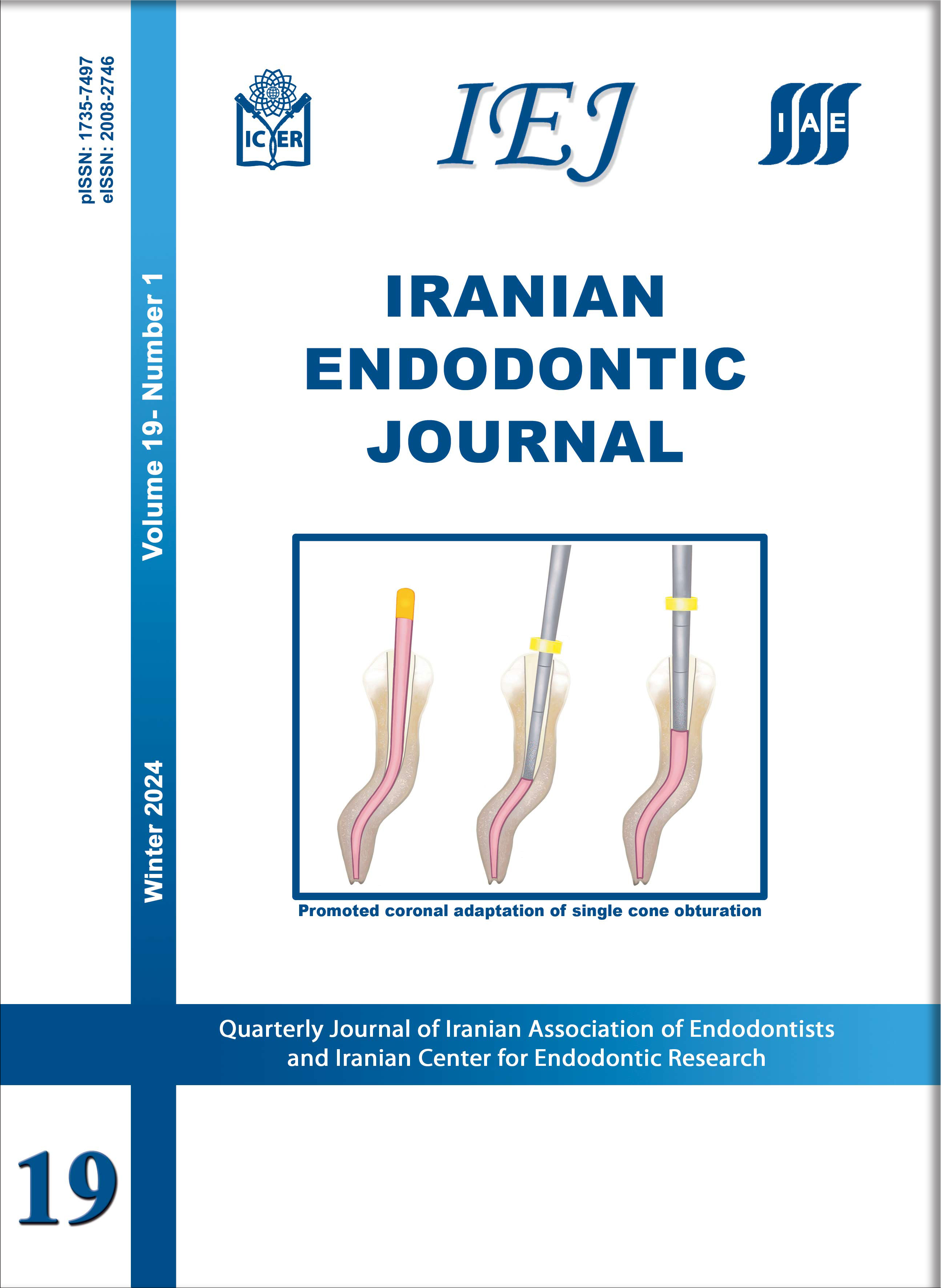Comparison of Gene Expression of Different Isoforms of Osteopontin in Symptomatic Irreversible Pulpitis of Human Dental Pulp
Iranian Endodontic Journal,
Vol. 17 No. 1 (2022),
1 January 2022,
Page 1-6
https://doi.org/10.22037/iej.v17i1.27165
Introduction: Osteopontin (OPN), plays an important role in immune system modulation. OPN can activate osteoclasts, thus causing resorption of bone. In addition, it might have a protective function against polymicrobial endodontic infections. Since different isoforms of OPN might have diverse roles, the aim of the present study was to compare gene expression of different isoforms of osteopontin in symptomatic irreversible pulpitis and normal pulps of the human dental pulp. Materials and Methods: Pulps were taken from 20 teeth with symptomatic irreversible pulpitis as the case group and from 20 intact premolars scheduled for extraction as the control group. After RNA extraction and synthesis of complementary DNA (cDNA), quantitative real-time polymerase chain reaction (PCR) was used for the evaluation of gene expression of OPN, OPN2 and OPN3. The Mann-Whitney U, t and Chi-square tests were used to analyze differences between the groups. Results: Mean values of OPN, OPN2 and OPN3 in normal pulps were 0.695±0.295, 0.656±0.298 and 0.816±0.422, respectively. Mean values of OPN, OPN2 and OPN3 in symptomatic irreversible pulpitis were 2.52±1.82, 1.99±0.899 and 1.816±0.954, respectively. Unlike OPN and OPN2, OPN3 exhibited significantly higher expression in normal pulps (P<0.05). Conclusion: The results of the present case- control study showed that some variants of OPN are upregulated during pulpitis and it might be due to their prominent modulatory roles in dental pulps.




